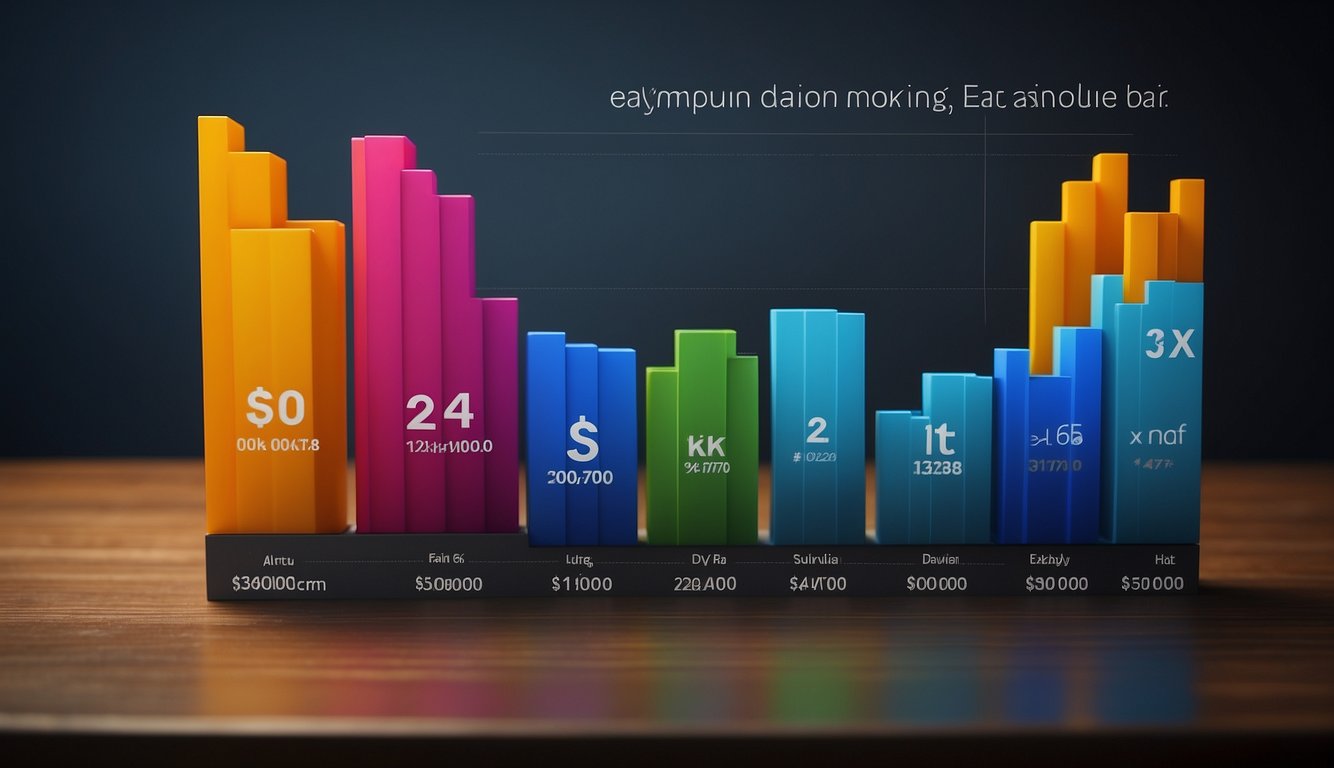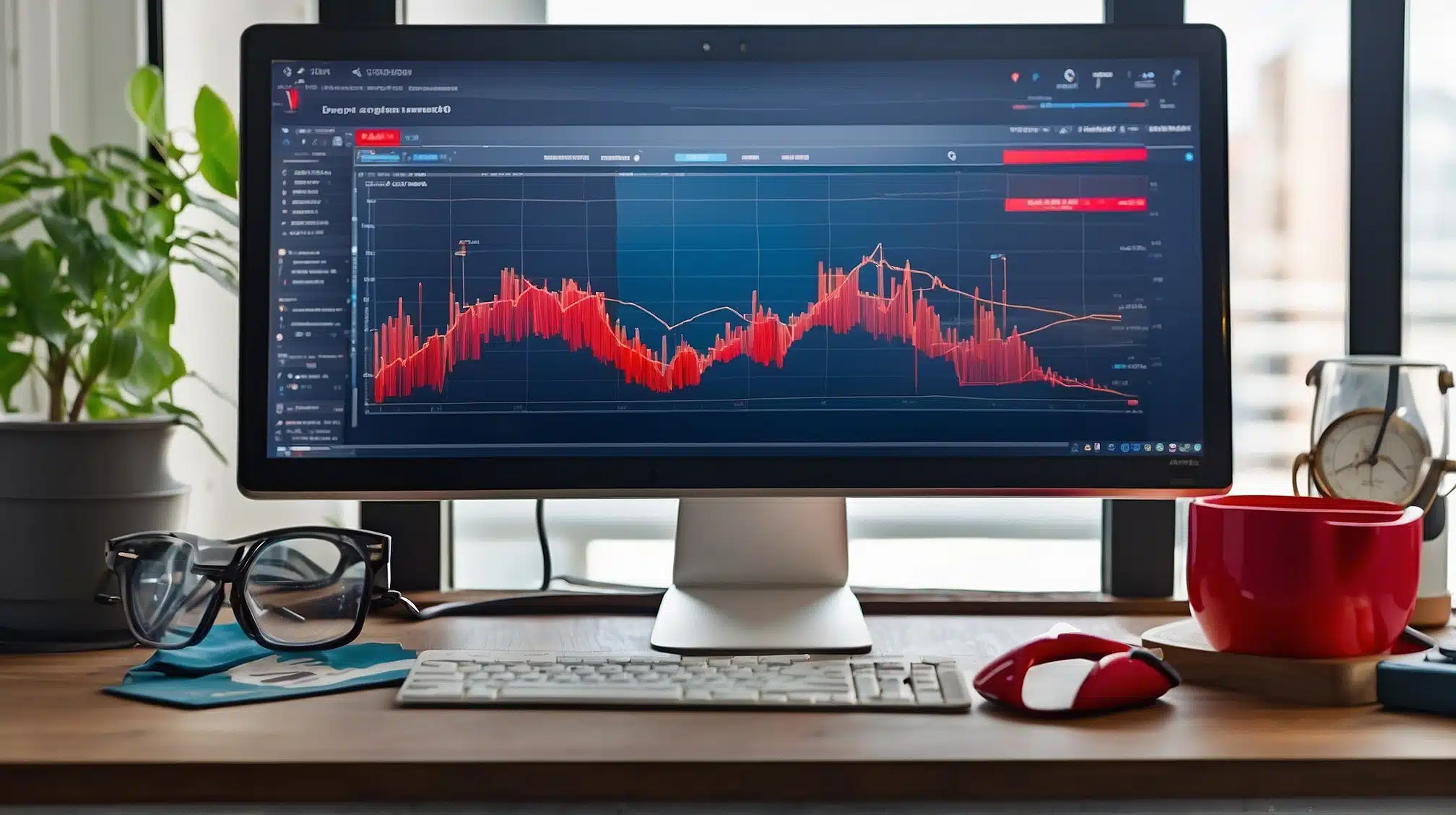If you're a content creator looking to monetize your videos, you've probably considered what Dailymotion vs YouTube earnings look like in terms of potential platforms. Both platforms have millions of active users and billions of monthly video views, but which one is better for your earnings potential? In this article, we'll compare the two video platforms and their monetization models to help you make an informed decision.

Understanding video platforms is crucial to determining which one is right for you. YouTube is the largest video platform in the world, with over 2 billion monthly active users. Dailymotion, on the other hand, has a smaller user base but is popular in Europe and has a strong focus on high-quality, original content. While YouTube is more widely known, Dailymotion offers unique features and a less crowded market for content creators.
When it comes to monetization models, both platforms offer similar options such as advertising revenue, sponsorships, and affiliate marketing. However, there are some differences in the way they handle monetization. For example, YouTube has stricter requirements for monetization eligibility and offers a wider range of ad formats. Dailymotion, on the other hand, has a more flexible system that allows creators to monetize their content from day one.
Key Takeaways
- Understanding the differences between YouTube and Dailymotion is crucial to choosing the right platform for your content.
- Both platforms offer similar monetization models, but there are differences in the way they handle monetization eligibility and ad formats.
- Dailymotion offers a less crowded market for content creators and a more flexible system for monetizing content.
Understanding Video Platforms
When it comes to hosting and sharing your videos online, YouTube and Dailymotion are two of the biggest platforms available. Each platform has its own unique features and benefits, making it important to understand the differences between them in order to choose the one that best suits your needs.
YouTube's Dominance
As the largest video platform in the world, YouTube has a massive audience that reaches across the globe. The platform boasts over 2 billion monthly active users, and is available in over 100 countries and 80 languages.
One of the key benefits of YouTube is its ability to generate significant traffic and views for your content. With its large audience and powerful search algorithms, YouTube can help you reach a large audience quickly and easily.
Dailymotion's Presence
While Dailymotion may not have the same level of dominance as YouTube, it still has a significant presence in the online video space. The platform was founded in France in 2005, and has since grown to become one of the largest video platforms in Europe.
One of the key benefits of Dailymotion is its focus on high-quality content. The platform has strict guidelines for the types of videos that can be uploaded, which helps to ensure that the content on the platform is of a high standard.
Comparing Platform Reach
When it comes to comparing the reach of YouTube and Dailymotion, there are a few key factors to consider. YouTube has a much larger audience overall, with over 2 billion monthly active users. However, Dailymotion has a strong presence in Europe, particularly in France, where it is the largest video platform.
Ultimately, the platform you choose will depend on your specific needs and goals. If you are looking to reach a large global audience quickly, then YouTube may be the best option for you. However, if you are looking to target a specific audience in Europe, particularly in France, then Dailymotion may be the better choice.
Overall, both platforms offer a range of benefits and features that can help you to reach your audience and achieve your goals. By understanding the differences between them, you can make an informed decision about which platform is right for you.
Dailymotion vs YouTube Earnings: Monetization Models
YouTube Monetization
YouTube offers several ways to monetize your content. The most common way is through ads. YouTube has a Partner Program, also known as YPP (YouTube Partner Program), which allows creators to monetize their videos with ads. To be eligible for YPP, you need to have at least 1,000 subscribers and 4,000 watch hours in the past 12 months. Once you meet the eligibility criteria, you can apply for YPP and start monetizing your videos with ads.
Apart from ads, YouTube also allows creators to earn money through sponsorships, affiliate marketing, and merchandise sales. Creators can use their channel to promote sponsored products and earn a commission on sales made through their affiliate links. They can also sell merchandise directly from their channel page.
Dailymotion Monetization
Dailymotion also offers several ways to monetize your content. Like YouTube, Dailymotion has a Partner Program, which allows creators to monetize their videos with ads. Dailymotion Partner Program has no eligibility criteria, and anyone can join the program and start monetizing their videos with ads.
Apart from ads, Dailymotion also allows creators to earn money through sponsorships and brand collaborations. Creators can work with brands to create sponsored content and earn money from it.
Comparison of Revenue Models
Both YouTube and Dailymotion offer similar monetization models, with ads being the most common way to earn money. However, YouTube has stricter eligibility criteria for its Partner Program, while Dailymotion has no eligibility criteria. This means that it's easier to start monetizing your videos on Dailymotion than on YouTube.
Another difference between the two platforms is the revenue share. YouTube shares 55% of its ad revenue with creators, while Dailymotion shares 70% of its ad revenue with creators. This means that creators can earn more money on Dailymotion than on YouTube.
In terms of sponsorships and brand collaborations, both platforms offer similar opportunities for creators to earn money. However, YouTube has a larger audience and more established creators, which means that it may be easier to find sponsorships and brand collaborations on YouTube.
Overall, both YouTube and Dailymotion offer several ways for creators to monetize their content. The choice between the two platforms depends on your goals and preferences.
Earnings Potential

When it comes to earning potential, both Dailymotion and YouTube offer monetization options for creators. However, there are several factors that can influence your earnings on these platforms.
Factors Influencing Earnings
One of the primary factors that can impact your earnings is the CPM, or cost per thousand views. While the accepted formula that Social Blade LLC uses to calculate the CPM range is $0.25 USD - $4.00 USD, the actual CPM can vary depending on the quality of your video content, the niche you are in, and the engagement of your audience.
Another factor that can influence your earnings is the number of views your videos receive. YouTube has a larger user base and higher overall traffic compared to Dailymotion, which can translate to more views and higher potential earnings.
Maximizing Video Revenue
To maximize your video revenue, it's important to create high-quality content that resonates with your audience. This can help increase engagement and drive more views to your videos. Additionally, you can experiment with different niches to see which ones generate the most revenue.
Another way to increase your earnings is to optimize your videos for ad revenue. This can include using mid-roll ads, which can generate more revenue than pre-roll ads. You can also experiment with different ad formats to see which ones work best for your audience.
Earnings Calculators
If you want to get a better idea of your potential earnings on YouTube or Dailymotion, you can use earnings calculators. These calculators take into account factors such as your daily views and estimated CPM to give you an idea of your estimated daily or monthly earnings.
One popular earnings calculator is the YouTube Money Calculator, which allows you to input your daily views and average engagement rate to estimate your potential earnings. Another option is the Estimated Youtube Money Calculator by Social Blade, which takes into account your daily views and estimated CPM to give you an idea of your potential earnings.
By taking into account these factors and using earnings calculators, you can get a better idea of your potential earnings on Dailymotion and YouTube. However, it's important to keep in mind that these estimates are just that - estimates. Your actual earnings may vary depending on a variety of factors.
Audience Engagement and Growth

Building a Subscriber Base
One of the most important factors in building a successful channel on either Dailymotion or YouTube is building a strong subscriber base. Subscribers are viewers who have opted to follow your channel and receive notifications when new content is uploaded.
To build a subscriber base, you need to create content that is interesting, engaging, and relevant to your target audience. You can also use marketing tactics such as promoting your channel on social media, collaborating with other creators, and offering exclusive content to subscribers.
Engagement Metrics
Engagement metrics are key indicators of how well your content is resonating with your audience. Metrics such as likes, comments, and shares are important because they show that your content is sparking conversations and generating interest among your viewers.
On both Dailymotion and YouTube, engagement metrics are used by the platform's algorithm to determine which videos are recommended to viewers. The more engagement your videos receive, the more likely they are to be recommended to new viewers, which can help you grow your audience.
Content Strategies
Creating high-quality content that resonates with your audience is key to building a successful channel on both Dailymotion and YouTube. However, the type of content that performs well on each platform can vary.
On Dailymotion, shorter, more casual videos tend to perform well. This is because Dailymotion's audience is more focused on entertainment and discovery, and is less likely to watch longer, in-depth content. On the other hand, YouTube's audience is more diverse and tends to be more interested in educational, informative, and longer-form content.
To succeed on either platform, it's important to understand your audience and create content that meets their needs and interests. You can use tools such as analytics to track your engagement metrics and see which types of content are resonating with your viewers.
Overall, building a strong and engaged audience on Dailymotion or YouTube takes time, effort, and a deep understanding of your target audience. By creating high-quality content, engaging with your viewers, and using marketing tactics to promote your channel, you can grow your audience and increase your earnings over time.
Advertising and Sponsorships

When it comes to monetizing your content, advertising and sponsorships are two of the most popular options. Both Dailymotion and YouTube offer ad revenue sharing programs, but there are some differences in the ad formats and rates.
Ad Formats and Rates
YouTube offers a variety of ad formats, including pre-roll ads, mid-roll ads, and post-roll ads. Pre-roll ads are the most common and typically pay the highest CPM (cost per thousand impressions) rates. Mid-roll ads can only be inserted into videos that are at least 10 minutes long and can be skipped after 5 seconds. Post-roll ads are shown at the end of a video and can be skipped after 5 seconds.
Dailymotion also offers pre-roll ads, mid-roll ads, and post-roll ads. However, Dailymotion's ad rates are generally lower than YouTube's. According to one source, Dailymotion pays an average CPM rate of $1.50, while YouTube pays an average CPM rate of $7.60.
Sponsorship Opportunities
In addition to ad revenue sharing, both Dailymotion and YouTube offer sponsorship opportunities for creators. Sponsorships can be a great way to earn additional income and build relationships with brands. However, it's important to disclose sponsored content to your audience to maintain transparency and trust.
YouTube has a dedicated platform called FameBit that connects creators with brands for sponsored content opportunities. Dailymotion does not have a similar platform, but creators can still reach out to brands directly to negotiate sponsorships.
Navigating Ad Policies
Both Dailymotion and YouTube have strict ad policies that creators must follow to avoid demonetization or account termination. Ad policies cover topics such as copyright infringement, hate speech, and adult content.
YouTube's ad policies are notoriously strict and have been the subject of controversy in the past. However, YouTube has made efforts to improve transparency and communication with creators regarding ad policy enforcement.
Dailymotion's ad policies are less strict than YouTube's, but creators should still be aware of what content is allowed and what is not. Dailymotion also has a content ID system that scans videos for copyright infringement.
Overall, both Dailymotion and YouTube offer opportunities for creators to monetize their content through advertising and sponsorships. However, it's important to understand the differences in ad formats and rates, as well as the policies and guidelines for each platform.
Additional Revenue Streams

Aside from ad revenue, both Dailymotion and YouTube offer additional ways for content creators to earn money. In this section, we'll explore some of the most popular revenue streams available and how they can benefit you.
Merchandise and Fan Funding
One way to monetize your content is by selling merchandise or offering fan funding. Both Dailymotion and YouTube have features that allow you to sell your own branded merchandise directly on their platforms. YouTube also offers a feature called Super Chat, which allows viewers to pay to have their comments highlighted during live streams. Additionally, both platforms offer fan funding options, which allow viewers to donate money directly to you.
Affiliate Marketing and Partnerships
Another way to monetize your content is through affiliate marketing and partnerships. This involves promoting products or services and earning a commission for any sales made through your unique affiliate link. Both Dailymotion and YouTube allow you to include affiliate links in your video descriptions, but YouTube also offers a dedicated Affiliate Marketing Program for eligible creators. Additionally, both platforms offer partnership programs, which allow you to collaborate with brands and earn money through sponsored content.
Exclusive Content and Memberships
Finally, both Dailymotion and YouTube offer exclusive content and membership options, which can provide a steady stream of income. Dailymotion allows you to create paid channels, which offer exclusive content to subscribers. YouTube offers a similar feature called channel memberships, which allows viewers to pay a monthly fee to access exclusive content and perks. Both platforms also allow you to create and sell digital products, such as e-books or online courses.
Overall, there are many additional revenue streams available beyond ad revenue on both Dailymotion and YouTube. By exploring these options and finding the ones that work best for you and your audience, you can create a sustainable income from your content.
Content Creation and Optimization

Creating high-quality content is key to success on both Dailymotion and YouTube. However, there are some differences in the types of content that perform well on each platform.
Video Quality and Production
Both platforms prioritize high-quality video content. This means that you should invest in good equipment and take the time to produce polished videos. However, Dailymotion is known for having a more relaxed approach to video production, and some creators find that they can get away with slightly lower quality videos on the platform.
SEO and Discoverability
Optimizing your content for search engines is crucial for both Dailymotion and YouTube. You should make sure that your titles, descriptions, and tags are all optimized for relevant keywords. Additionally, you should take advantage of features like captions and transcription tools to make your videos more accessible and easier to find.
However, there are some differences in the way that each platform handles SEO. YouTube is known for having a more sophisticated algorithm that takes into account factors like watch time and engagement. On the other hand, Dailymotion is known for having a more straightforward approach to SEO, and some creators find that it is easier to rank highly on the platform.
Utilizing Analytics
Both Dailymotion and YouTube offer robust analytics tools that can help you track your performance and make informed decisions about your content. You should make sure that you are regularly reviewing your analytics and using the data to guide your content strategy.
Some key metrics to pay attention to include organic search traffic, engagement, and video retention. By understanding which videos are performing well and which ones are not, you can make adjustments to your content and optimize for better results.
Overall, creating high-quality video content and optimizing it for search engines is crucial for success on both Dailymotion and YouTube. By utilizing analytics and staying up-to-date with best practices, you can maximize your earnings and grow your audience on both platforms.
Platform-Specific Features and Tools

YouTube's Advanced Features
YouTube offers a range of advanced features that can help creators to monetize their content. One of the most powerful tools is YouTube Analytics, which provides detailed insights into audience demographics, engagement levels, and revenue streams. You can use this data to optimize your content, target specific audiences, and track your earnings over time.
Another key feature of YouTube is its integration with Google AdSense, which allows creators to earn money from advertising revenue. You can choose to monetize your videos with ads, or you can offer paid subscriptions or merchandise through the platform. Additionally, YouTube offers a range of tools for embedding videos on other websites, which can help to increase your exposure and drive traffic to your channel.
Dailymotion's Unique Offerings
Dailymotion offers a number of unique features that set it apart from other video platforms. One of the most notable is MotionMaker, a program that allows creators to earn money by producing high-quality content. MotionMaker offers a range of benefits, including access to exclusive features, priority support, and increased visibility on the platform.
Dailymotion also offers a range of privacy and security features, which can help to protect your content and your audience. For example, you can choose to make your videos available only to certain users, or you can set up password protection for specific videos. Additionally, Dailymotion offers a range of tools for managing your content, including video editing tools, analytics dashboards, and revenue tracking tools.
Content Management Tools
Both YouTube and Dailymotion offer a range of content management tools that can help you to optimize your videos and increase your earnings. For example, both platforms allow you to add tags and descriptions to your videos, which can help to improve your search rankings and increase your visibility. Additionally, both platforms offer tools for managing your comments and engaging with your audience.
Overall, both YouTube and Dailymotion offer a range of powerful features and tools for video creators. Whether you're looking to monetize your content, increase your exposure, or engage with your audience, these platforms offer a range of options and opportunities. By taking advantage of these features, you can maximize your earnings and build a successful video channel.
Legal and Compliance Issues

When it comes to legal and compliance issues, both Dailymotion and YouTube have faced their fair share of challenges. In this section, we'll take a closer look at some of the most significant issues that both platforms have dealt with, including copyright and content ownership, privacy and data protection, and content restrictions and filters.
Copyright and Content Ownership
One of the most significant legal issues that both Dailymotion and YouTube have faced is copyright infringement. In the past, both platforms have been accused of allowing users to upload copyrighted content without permission. In response, both platforms have implemented a variety of measures to prevent copyright infringement, including content ID systems that can automatically detect copyrighted material.
However, despite these measures, both platforms still face challenges when it comes to copyright and content ownership. For example, in 2019, YouTube was hit with a $170 million fine for violating children's privacy laws, while Dailymotion has faced lawsuits over copyrighted content uploaded by users.
Privacy and Data Protection
Another significant legal issue that both platforms have faced is privacy and data protection. Both Dailymotion and YouTube collect a significant amount of data from their users, including personal information such as names, email addresses, and IP addresses.
To protect user privacy, both platforms have implemented a variety of measures, including data encryption and user consent forms. However, both platforms have also faced criticism for their data collection practices, with some users concerned about the amount of data that is collected and how it is used.
Content Restrictions and Filters
Finally, both Dailymotion and YouTube have faced challenges when it comes to content restrictions and filters. Both platforms have policies in place that prohibit certain types of content, such as pornography and hate speech. However, enforcing these policies can be difficult, and both platforms have faced criticism for allowing prohibited content to slip through the cracks.
To address these issues, both platforms have implemented a variety of filters and algorithms designed to detect prohibited content automatically. While these measures have been effective to some extent, both platforms continue to face challenges when it comes to content restrictions and filters.
Payment Systems and Financial Management

When it comes to earning money on video-sharing platforms like Dailymotion and YouTube, it is important to understand the payment systems and financial management. In this section, we will discuss the payment thresholds, managing earnings and taxes, and financial planning for creators.
Understanding Payment Thresholds
Both Dailymotion and YouTube have payment thresholds that creators must meet before they can receive payment. For Dailymotion, the payment threshold is €100, while for YouTube, it is $100. Once you reach the payment threshold, you can request payment from Dailymotion or YouTube. It is important to note that the payment threshold may vary depending on your location and the payment method you choose.
Managing Earnings and Taxes
Managing earnings and taxes is an important aspect of financial management for creators. Both Dailymotion and YouTube provide creators with tools to manage their earnings and taxes. For example, YouTube has a feature called the YouTube Money Calculator, which allows creators to estimate their potential earnings based on their views, CPM, and other factors. Dailymotion, on the other hand, provides creators with detailed reports on their earnings, including revenue share, ad impressions, and more.
When it comes to taxes, creators are responsible for paying taxes on their earnings. Both Dailymotion and YouTube provide creators with tax forms and information on how to report their earnings. It is important to consult with a tax professional to ensure that you are reporting your earnings correctly.
Financial Planning for Creators
Financial planning is crucial for creators who want to earn a sustainable income from video-sharing platforms. This includes setting financial goals, creating a budget, and tracking your expenses. Both Dailymotion and YouTube provide creators with tools to help them manage their finances, including earnings reports and analytics.
It is also important to diversify your income streams as a creator. This can include creating merchandise, offering sponsored content, or partnering with other creators. By diversifying your income, you can reduce your reliance on a single platform and increase your overall earnings.
In conclusion, understanding payment systems and financial management is essential for creators who want to earn money on video-sharing platforms like Dailymotion and YouTube. By managing your earnings and taxes, setting financial goals, and diversifying your income streams, you can build a sustainable income as a creator.



























